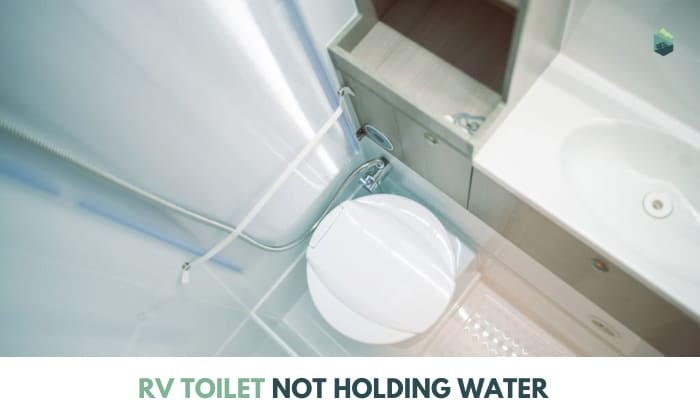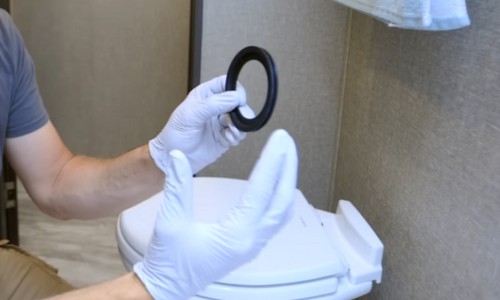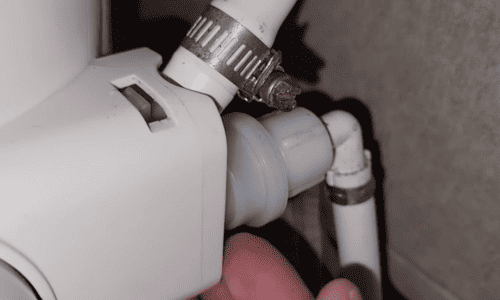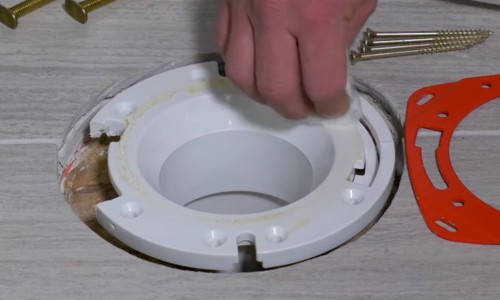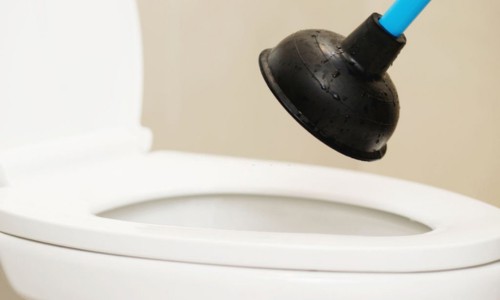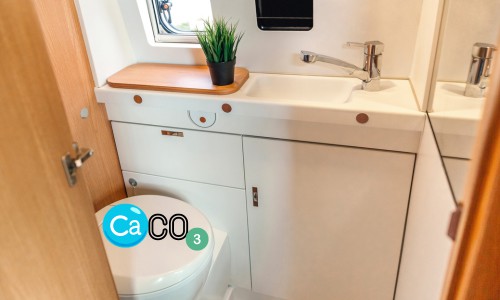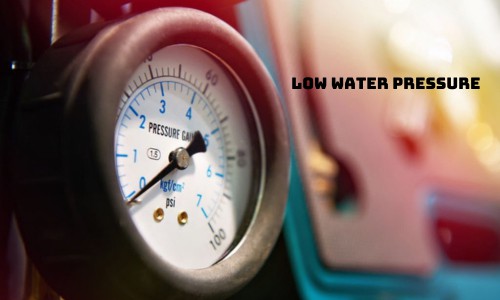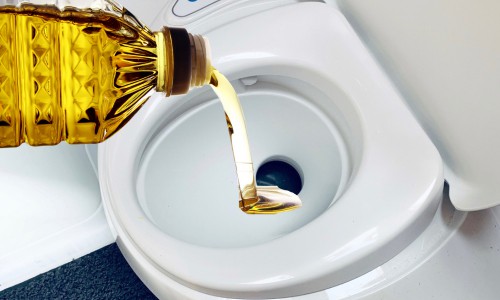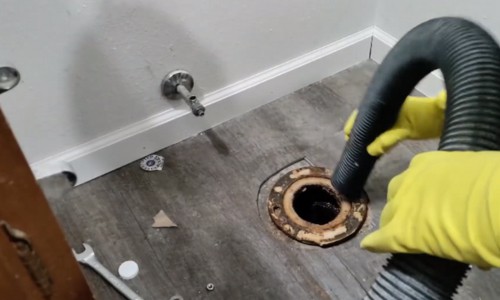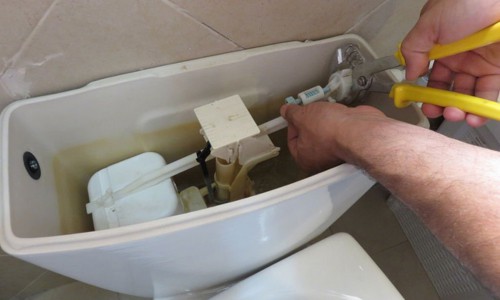An RV toilet not holding water can turn an otherwise enjoyable outdoor adventure into a smelly nightmare. And when “nature” calls, you’ll have to look for a different place to do your “business.”
Issues with the RV toilet seal might explain this stinky problem. A broken valve, worn-out flange, obsolete parts, leaky tube, and a clogged drain line can also account for an RV toilet bowl not holding water.
Knowing the causes will lead you to the solutions. Read on.
Page Contents
Common Reasons for RV Toilet Not Holding Water
RV toilets are not that dissimilar to residential units. You have a bowl for holding the water and a flushing mechanism for emptying the water and fecal matter into the black tank.
The flush has a seal (gasket) and a ball that opens and closes. Flushing opens the ball and seal, releasing water from the bowl to empty the waste matter. It then closes, and water refills the bowl.
If the RV toilet won’t hold water in bowl, it could indicate an issue with these components or other factors. Here are plausible explanations for this problem.
1. Torn or Worn-out Gasket
The toilet seal or gasket (sometimes called a wax ring) prevents water from the bowl from entering the toilet. It also traps unwanted smells with the flush ball closed.
Unfortunately, gaskets don’t last forever. They can also deteriorate, explaining why water won’t stay in toilet bowl.
2. A Broken Water Valve
Most RV toilets connect directly to the motorhome’s freshwater tank, allowing them to draw water when someone flushes the unit. A valve exists between the toilet and the tank to safeguard against water flow issues.
Like gaskets, water valves can also break or deteriorate. It can lead to an RV toilet being incapable of holding water.
3. A Worn-out or Damaged Flange
The RV toilet flange connects it to the motorhome’s floor. Unsurprisingly, some call it the floor flange or closet flange.
An RV toilet leaking, especially at the bottom near the floor, might indicate a broken flange.
4. Clogging or Obstruction in the Drain Line
As mentioned, flushing the RV toilet opens the flush ball and toilet seal to empty contents into the motorhome’s black tank. Between these two components is a drain line, which can clog with tissue and other debris.
This occurrence might also explain the toilet not getting water (or at least holding it).
5. A Leaking Toilet Water Fill Tub
Akin to a broken toilet valve, a break in the fill tube can also make an RV toilet unable to hold water. This pipe conveys water from the RV holding tank to the toilet.
A water leak in RV toilet fill tube allows the water to escape instead of remaining in the bowl.
6. Limescale Buildup
Traveling to places with high concentrations of water hardness minerals (i.e., calcium carbonate) can hasten limescale formation on the toilet seal.
The buildup can prevent the gasket from creating a watertight seal, allowing some liquid to escape and inhibiting the toilet from holding water.
7. Low Water Pressure
Here’s an often overlooked reason an RV toilet doesn’t hold water. Insufficient pressure in the waterline can prevent the system from pushing water into the RV toilet.
Clogs, leaks, and other plumbing system issues can cause the water pressure to drop. Unfortunately, these also make your RV toilet unable to hold water.
Fixing Water Holding Problems in RV Toilets
Knowing and appreciating the causes of RV toilets not holding water can make it easier to decide on an appropriate solution. Here are some ways to fix a RV toilet that doesn’t hold water.
1. Pour Cooking Oil Into the RV Toilet
Most toilet gaskets feature a rubber material that can deteriorate over time. It can harden and crack, creating spaces for water to flow.
If the toilet seal isn’t cracked yet, pouring oil into the RV toilet should lubricate and soften the rubber.
Disconnect the RV toilet from its water source by switching off the motorhome’s water pump. If you’re linked to a public water utility, you might want to disconnect it.
Flush the RV toilet several times until it no longer fills with water. Ensure the flush ball is in the “closed” position before pouring enough cooking oil (i.e., vegetable oil, olive oil, canola oil, or other oils) to submerge the toilet seal about half an inch deep.
Leave the oil for several minutes. Activate the flush pedal to roll the flush ball and start coating and softening the rubber toilet seal.
Open the water valve or reestablish water connection to the RV toilet after several minutes.
2. Clean the Toilet Seal
A more “hands-on” approach might be necessary if the oil trick doesn’t soften the gasket and allow the toilet to hold water again.
Boil some water, pour it into a bucket, and add liquid dish soap. Mix well, pour into the RV toilet, and leave it for about five minutes.
Get a long-handled toilet brush, press and hold the toilet flush pedal, and start scrubbing the gasket and its surroundings.
Alternatively (and if you don’t find it gross), wear rubber gloves and use a scrubber sponge to clean the toilet seal’s inner ring and nearby areas. Please be careful not to let the sponge fall off your hands because it can clog the drain pipe to the black tank.
You can perform the “oil trick” after cleaning the toilet seal.
3. Replace the Toilet Seal
Sometimes, the oil and gasket cleaning doesn’t work, or the toilet seal is beyond repair, so the only solution is a replacement. Thankfully, this RV toilet repair isn’t as complicated as some RV owners think.
However, we must emphasize the importance of getting the correct replacement seal. Otherwise, you’ll end up with the same problem because the gasket will not be a perfect fit for the RV toilet.
You might want to contact the RV manufacturer and ask for details about the seal. Alternatively, asking motorhome owners on online forums who might have experienced the same issue might be helpful.
Disconnect the RV toilet from its water source and use the correct hand tool to loosen and remove the bolts securing the toilet to its base. Gently twist the bowl to remove it from the base.
Locate the toilet seal above the flush ball. We recommend taking a picture of how the setup looks before disassembling the gasket from the flush ball. Doing so allows you to place the replacement seal in its correct position. That’s how we replace RV toilet bowl seals.
Center the replacement gasket inside the toilet and position the bowl into its base. Secure it with the bolts, ensuring the gasket doesn’t move or slip out of its center position.
Perform the “cooking oil trick” as an added measure. Alternatively, you can pour an RV toilet seal conditioner before reestablishing the water connection to the toilet.
4. Replace the Damaged Toilet Valve
Replacing a broken water valve should be as easy as cutting off the water supply to the RV toilet. Flush it several times until there’s no more water coming out.
Loosen and remove the fasteners securing the tank to the RV toilet and unfasten the screws or clamps connecting the water valve to the water supply line. Remove other items as needed.
Pull the damaged water valve from its casing and replace it with a new valve. Ensure it’s the correct fit. Reassemble everything and reconnect the RV toilet to its water supply.
5. Lubricate or Repair the Foot Pedal
If the foot pedal won’t move to get water into the toilet bowl, try lubricating it and see if the pedal goes back to working as normal. If it doesn’t, call a professional for a thorough assessment and replace this toilet component as necessary.
Conclusion
An RV toilet not holding water can be a smelly mess, requiring quick and proven solutions to make your RVing adventures more worthwhile. Pouring cooking oil into the toilet and waiting several minutes often does the trick, but it might only offer temporary relief.
A more permanent solution is to replace the toilet seal, which should make your RV toilet function like brand-new.
Still, other factors might cause your RV commode to stop holding water. If our solutions don’t work, a professional plumber should help diagnose and fix the problem permanently.
“Hi, I’m Francis’ husband—Calvin. Our story began with our shared passion for traveling. I have had a career journey for over 11 years at Ford Motor Company, where I took on the role of BMS SW Process Engineer.
Together with my wife, I have dedicated countless hours to exploring every nook and corner of the world. Ten years living in an RV may seem long, but time seems to fly by when I’m doing what I love with the person I love.
FMCA’s 103rd International Convention & RV Expo in Gillette, WY,
Like my wife, I hope to help you see the beauty of traveling off the beaten path by sharing insights into this lifestyle. In addition to my corporate roles, I also launched our website – Outdoorbits, in 2015 and continue to contribute my knowledge and skills to the present day. And I’ll be completely honest with you—no hiding the truth or sugarcoating the possible challenges.
So, if you want to run away from the busy lifestyle to embrace nature, I’m your guy.”
